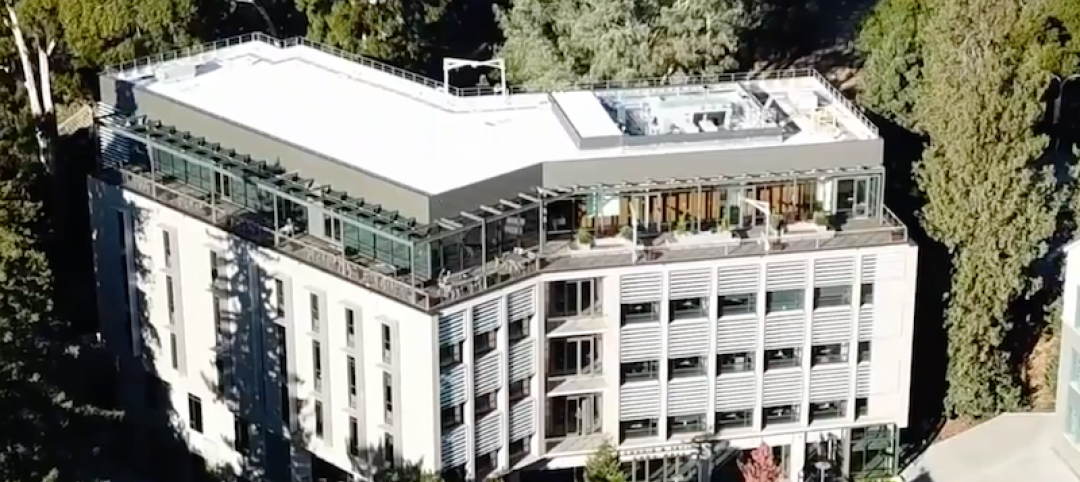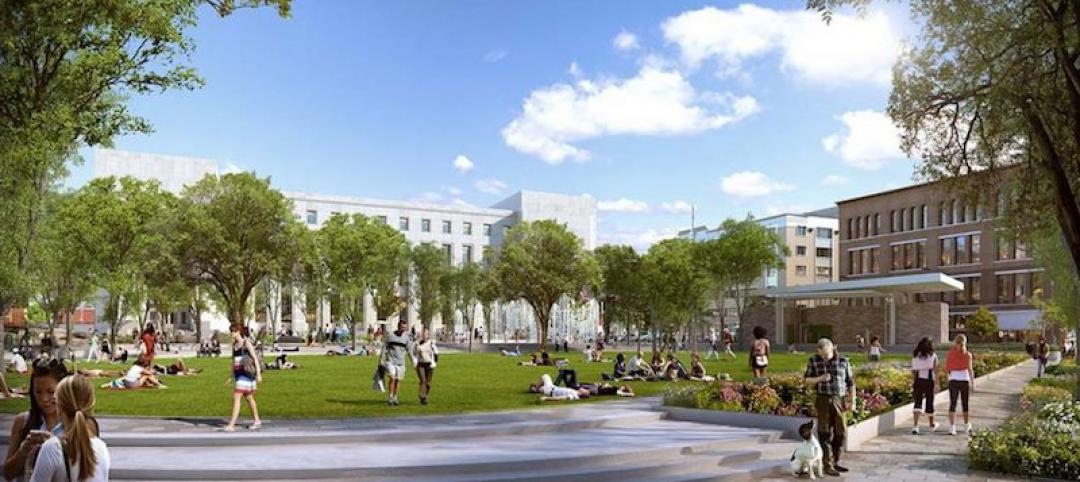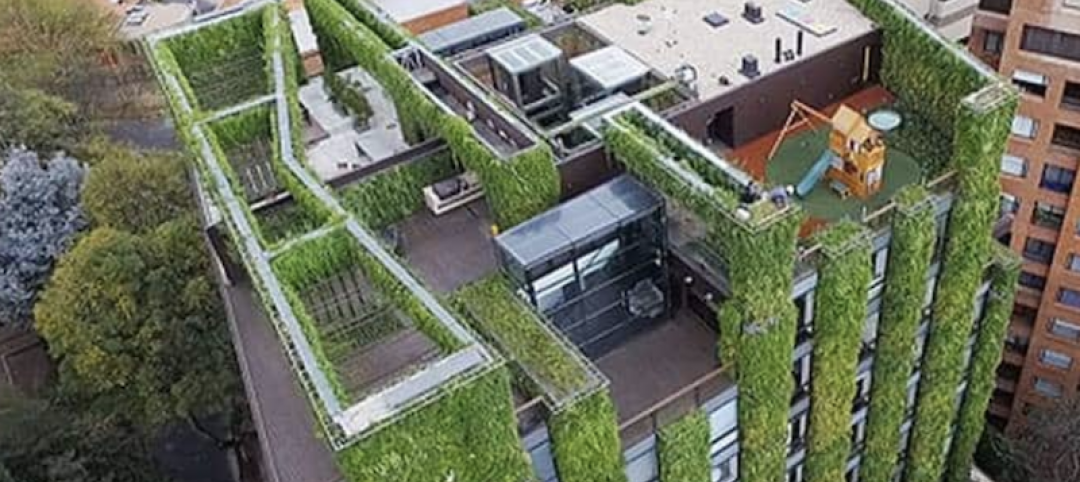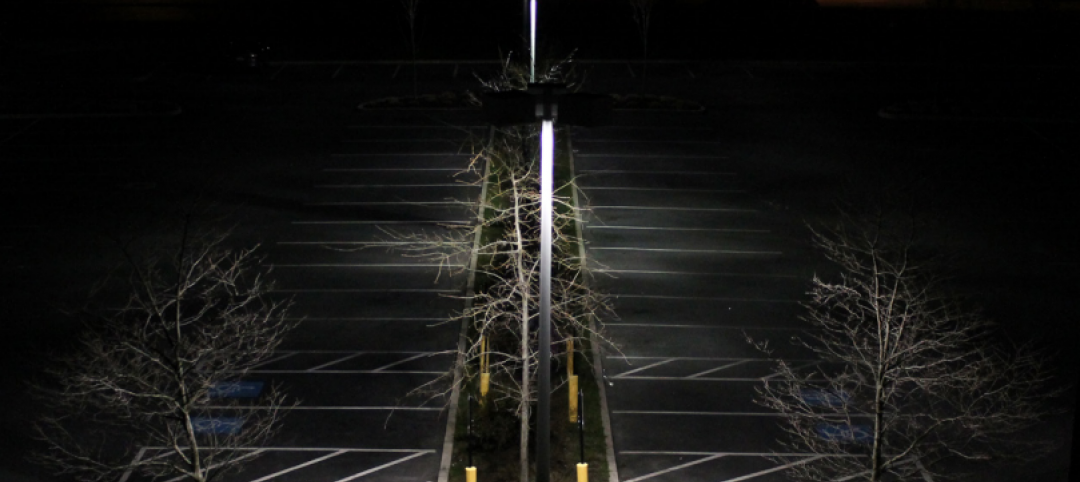Green Business Certification Inc. (GBCI) launched its newly acquired SITES rating system, the most comprehensive program and toolkit for developing sustainable landscapes.
SITES was developed through a collaborative, interdisciplinary effort of the American Society of Landscape Architects, The Lady Bird Johnson Wildflower Center at The University of Texas at Austin, and the United States Botanic Garden. The rating system can be applied to development projects located on sites with or without buildings, ranging from national parks to corporate campuses, streetscapes and homes, and much more.
“Landscapes knit together the fabric of our communities,” said Rick Fedrizzi, CEO, GBCI. “And sustainable landscapes are critical in their ability to reduce water demand, filter and reduce storm water runoff, provide wildlife habitat, reduce energy consumption, improve air quality, improve human health, and increase outdoor recreation opportunities. SITES is an important addition to our toolkit, and GBCI appreciates this opportunity to support this additional contribution to healthy, thriving communities and neighborhoods.”
The SITES rating system uses progressive industry standards for landscape design and incorporates additional recommendations from technical experts in the fields of soil science, botany and horticulture, hydrology, materials, and human health and well-being.
“It is exciting to see years of work developing and field testing SITES culminate with the availability of this rating system,” said Fritz Steiner, FASLA, dean of the School of Architecture at The University of Texas at Austin. “The depth and breadth of approaches that were implemented by pilot projects demonstrates how valuable SITES can become for revolutionizing our relationships with built landscapes.”
“Landscape architects and members of all the related design and planning fields know that the issues addressed in SITES are increasingly important to creating livable and resilient communities,” said Nancy C. Somerville, executive vice president and CEO of the American Society of Landscape Architects (ASLA). “GBCI will take SITES to the next level and ensure its future growth and influence, and ASLA is pleased to provide continued education and communications support.”
“SITES is a powerful tool for enhancing built landscapes precisely because it puts ecosystem services, the benefits humans derive from functional ecosystems, front and center,” said Ari Novy, executive director of the United States Botanic Garden. “This approach will help maximize our collective ability to create sustainable and healthy communities. Making SITES available through GBCI will be a great boon for the quality and resilience of our built landscapes.”
The SITES rating system uses progressive industry standards for landscape design and incorporates additional recommendations from technical experts in the fields of soil science, botany and horticulture, hydrology, materials, and human health and well-being. Some of the credits for sustainable landscape performance have been developed in alignment with similar credits in the U.S. Green Building Council’s LEED (Leadership in Energy and Environmental Design) rating system, the world’s most widely used green building program.
SITES, originally modeled after LEED, includes best practices in landscape architecture, ecological restoration, and related fields, as well as knowledge gained through peer-reviewed literature, case-study precedents, and projects registered in the SITES pilot program.
“Adding SITES to GBCI’s rapidly growing list of certification systems and credentials it supports not only expands GBCI’s capabilities, but it also helps us to further our mission to enact global sustainable change,” said Mahesh Ramanujam, president, GBCI.
SITES draws on the experience gained from a two-year pilot program involving more than 100 projects. Forty-six of these pilot projects have achieved certification, including landscape projects at corporate headquarters, national and city parks, academic campuses and private homes.
Interested project teams can visit sustainablesites.org for more information and to register their projects and access the SITES v2: Rating System For Sustainable Land Design and Development, a guide that provides best practices, performance benchmarks and tools for creating ecologically resilient landscapes and rewards successful projects through certification.
The Wildflower Center and ASLA will help GBCI create and implement SITES credentialing and certification offerings such as training project reviewers and will provide educational opportunities for pursuing SITES certification. GBCI owns exclusive rights to the SITES Rating System, its publications and trademarks.
Related Stories
Green | Jan 28, 2019
This is the country’s greenest academic building
Perkins+Will designed the building.
Green | Nov 15, 2018
USGBC launches LEED Zero, to address net zero carbon operations and resources in LEED green building projects
LEED Zero complements LEED to verify the achievement of net zero goals and signals market leadership in green buildings.
Green | Oct 17, 2018
USGBC survey suggests employees are happier, healthier, and more productive in LEED green buildings
Can healthier, more sustainable buildings give employers a hiring edge to attract best in class talent?
Green | Oct 15, 2018
Green, and then some: Architecture firms are helping cities raise the stakes in green design
Architecture firms are answering the call of local governments and institutional clients for higher standards in green building design.
Green | Sep 11, 2018
Chicago becomes seventh city in the world to achieve LEED for Cities Platinum certification
It is the highest level of certification available from the U.S. Green Building Council.
Green | Aug 28, 2018
Chattanooga’s Miller Park set to open after $10.3 million overhaul
Spackman Mossop Michaels and Eskew Dumez Ripple partnered on the project.
Green | Aug 16, 2018
Vertical gardens: Wellness oases in the urban jungle
When there’s only so much real estate available in urban centers for parks, how’s a developer to bring in more green with biophilic design?
Green | Aug 15, 2018
What if your neighborhood could make you healthier?
The WELL Community Standard equips planners to build health promotion into the very fabric of neighborhoods.
Green | Jul 26, 2018
St. Paul aims for zero carbon in all buildings by 2050
The city is working for better efficiency and sourcing green power to reach its goal.
Green | Jul 26, 2018
DOE releases updated version of Better Buildings Financing Navigator
Version 2.0 provides renewable energy financing options, sector-specific and location-specific financing resources, and a smart database of financing providers.
















